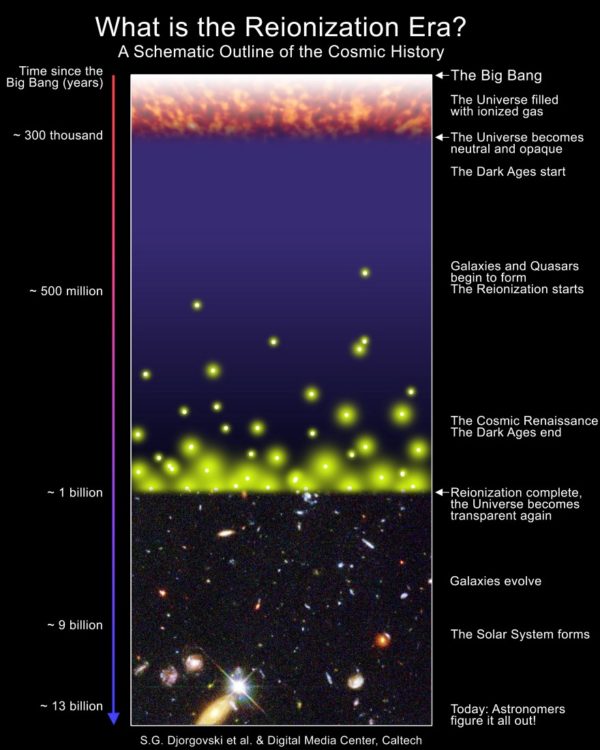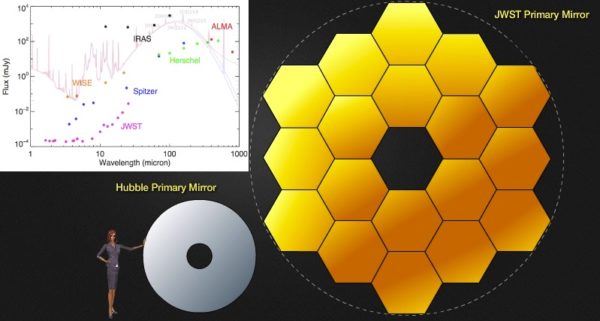"Now the world has gone to bed, Darkness won't engulf my head, I can see by infrared, How I hate the night." -Douglas Adams
The Hubble Space Telescope is an amazing piece of equipment, and has seen more distant stars and galaxies than any telescope before or since. Earlier this year, it broke its own cosmic distance record by discovering a galaxy at a redshift of 11, back when the Universe was just 400 million years old. Yet the first stars should go back even farther, and Hubble will never see them.
 The reionization and star-formation history of our Universe. Image credit: NASA / S.G. Djorgovski & Digital Media Center / Caltech.
The reionization and star-formation history of our Universe. Image credit: NASA / S.G. Djorgovski & Digital Media Center / Caltech.
Thanks to a combination of the fact that the Universe is not yet ionized and therefore transparent to light, and also that Hubble can only peer a little bit into the near-IR part of the spectrum, stars/galaxies at redshifts of 20, 30 or even 50 will never be seen by a Hubble-like telescope. But James Webb has a chance, and even if it fails, it will surely get us closer to the "first stars" than Hubble ever has.


It's been noted before, but the figure in that image is just weird.
There apparently are multiple versions,* but c'mon, just get whoever did the Voyager plaque and be done with it.
* E.g., "jwst.nasa.gov/images/JWST-HST-primary-mirrors.jpg